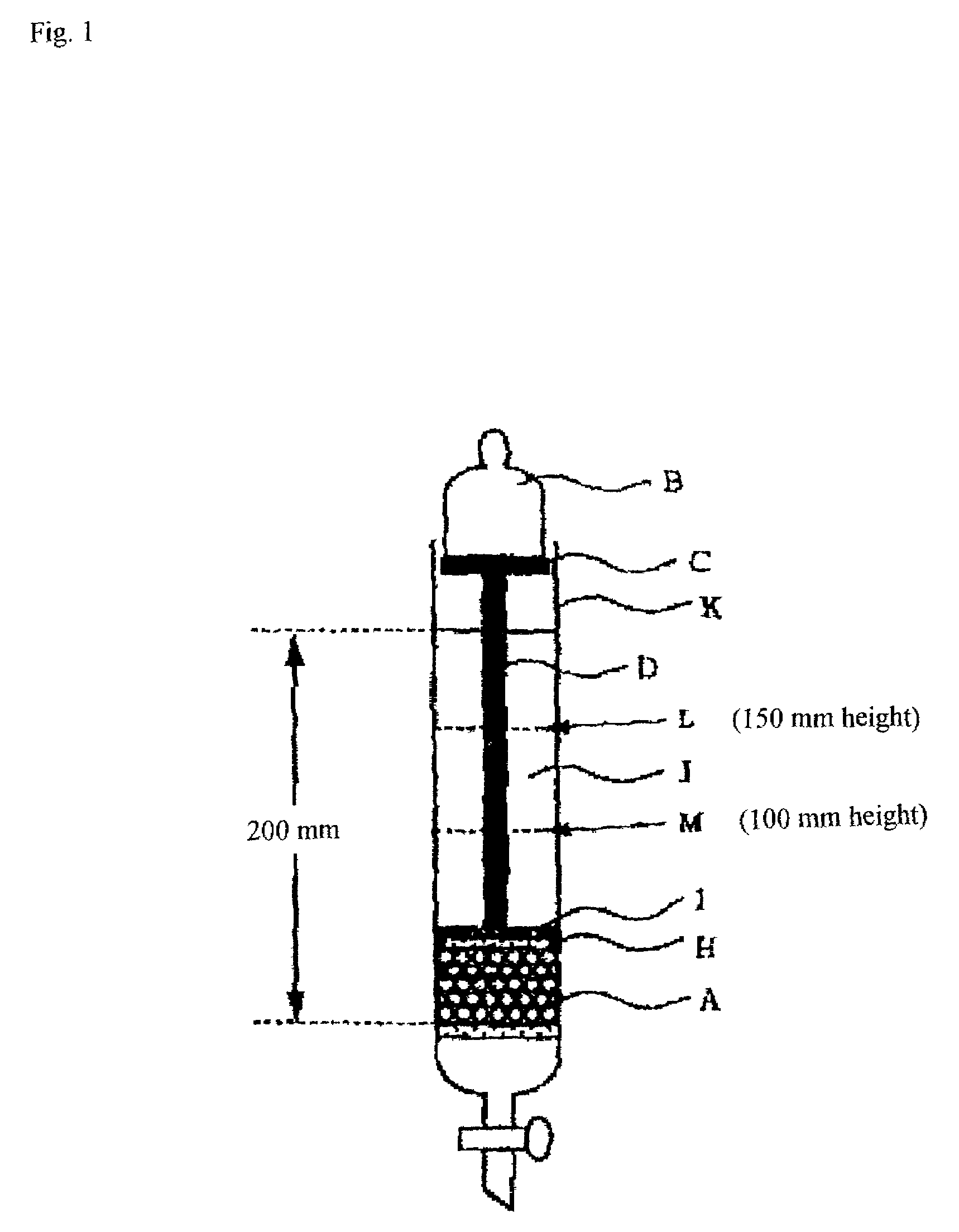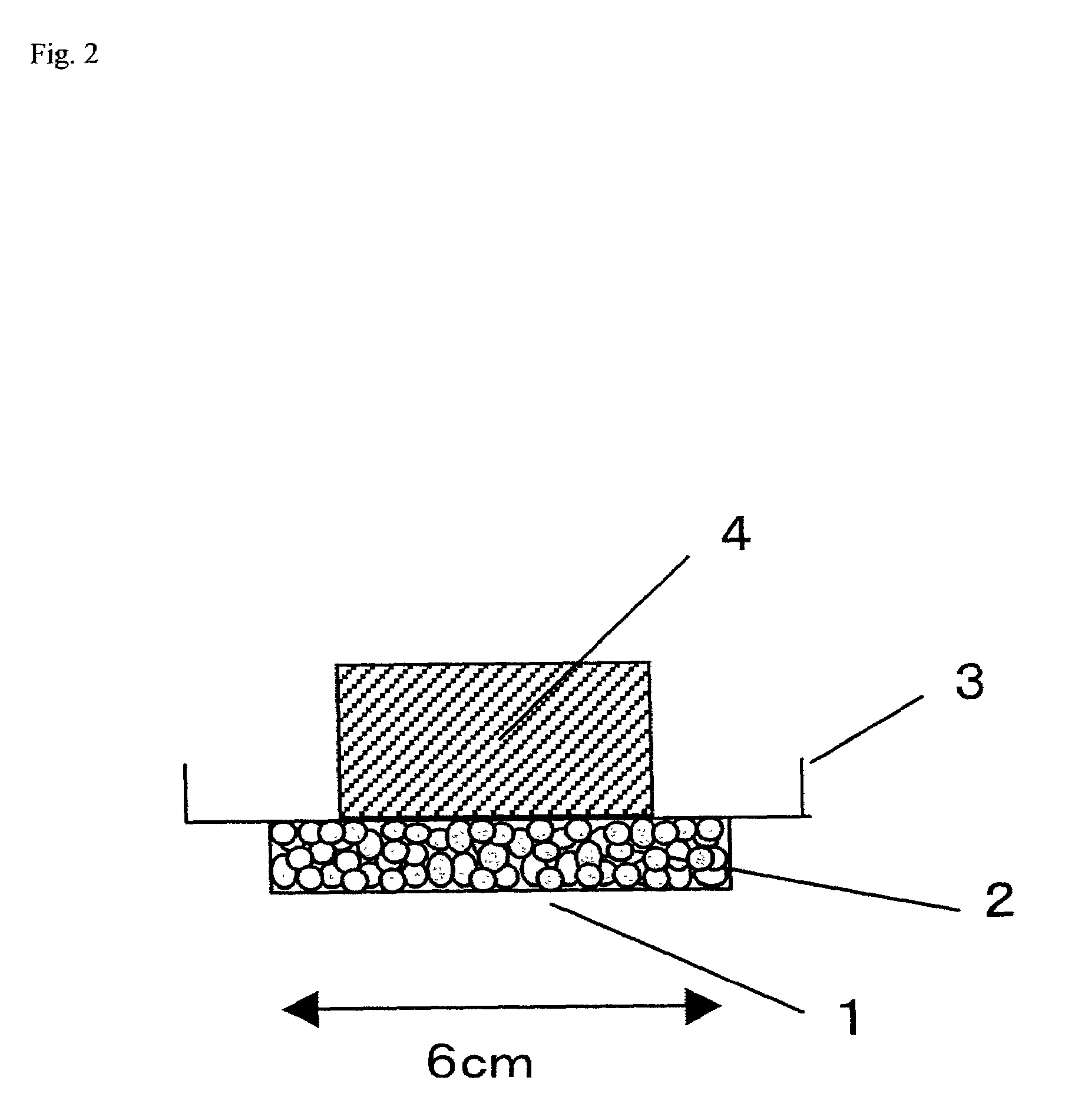Water-absorbing agent and production process therefor, and water-absorbent structure
a technology of water-absorbing agent and production process, which is applied in the direction of bandages, chemistry apparatus and processes, and other chemical processes, can solve the problems of weak cohesion strength among cellulose fibers, insufficient absorption properties, and insufficient water-absorbing structures, etc., and achieve excellent shape-maintaining properties and excellent absorption capacity
- Summary
- Abstract
- Description
- Claims
- Application Information
AI Technical Summary
Benefits of technology
Problems solved by technology
Method used
Image
Examples
referential example 1
[0309]In a reactor as prepared by lidding a jacketed stainless twin-arm kneader of 10 liters in capacity with two sigma-type blades, a reaction liquid was obtained by dissolving 0.08 mol % of polyethylene glycol diacrylate (average molecular weight: 487) in 5,500 g of aqueous sodium acrylate solution having a neutralization ratio of 71.3 mol % (monomer concentration: 38 weight %). Next, this reaction liquid was degassed under an atmosphere of nitrogen for 30 minutes. Continuously, 2.9 g of ammonium persulfate and 0.08 g of L-ascorbic acid were added thereto while being stirred, and then the reaction was started after about one minute. Then, the polymerization was carried out at 20 to 90° C. while the resultant formed gel was pulverized, and a crosslinked hydrogel polymer (1) was taken out after 30 minutes from the start of the polymerization.
[0310]The crosslinked hydrogel polymer (1) as obtained was pulverized wherein its diameter was not larger than about 5 mm. This pulverized cros...
referential example 2
[0312]In a reactor as prepared by lidding a jacketed stainless twin-arm kneader of 10 liters in capacity with two sigma-type blades, a reaction liquid was obtained by dissolving 0.05 mol % of polyethylene glycol diacrylate (average molecular weight: 487) in 5,500 g of aqueous sodium acrylate solution having a neutralization ratio of 71.3 mol % (monomer concentration: 38 weight %). Next, this reaction liquid was degassed under an atmosphere of nitrogen for 30 minutes. Continuously, 2.9 g of ammonium persulfate and 0.08 g of L-ascorbic acid were added thereto while being stirred, and then the reaction was started after about one minute. Then, the polymerization was carried out at 20 to 90° C. while the resultant formed gel was pulverized, and a crosslinked hydrogel polymer (2) was taken out after 30 minutes from the start of the polymerization.
[0313]The crosslinked hydrogel polymer (2) as obtained was pulverized wherein its diameter was not larger than about 5 mm. This pulverized cros...
referential example 3
[0315]To 100 parts of 10% aqueous solution of polyallylamine (commercial name: PAA-10C, weight-average molecular weight: about 10,000, produced by Nitto Bouseki Co., Ltd.), 0.25 part of ethylene glycol diglycidyl ether (commercial name: Denacol EX810, produced by Nagase Kasei Kogyo Co., Ltd.) as a crosslinking agent was added while being stirred, and they were also stirred for one minute after they were blended. This was left still at 60° C. for one hour, thus obtaining an aqueous solution of a cationic polymer compound (B-1). The cationic polymer compound (B-1) had a water solubility of 97% and a cation density of 17 mmol / g.
PUM
| Property | Measurement | Unit |
|---|---|---|
| particle diameters | aaaaa | aaaaa |
| height | aaaaa | aaaaa |
| height | aaaaa | aaaaa |
Abstract
Description
Claims
Application Information
 Login to View More
Login to View More - R&D
- Intellectual Property
- Life Sciences
- Materials
- Tech Scout
- Unparalleled Data Quality
- Higher Quality Content
- 60% Fewer Hallucinations
Browse by: Latest US Patents, China's latest patents, Technical Efficacy Thesaurus, Application Domain, Technology Topic, Popular Technical Reports.
© 2025 PatSnap. All rights reserved.Legal|Privacy policy|Modern Slavery Act Transparency Statement|Sitemap|About US| Contact US: help@patsnap.com



